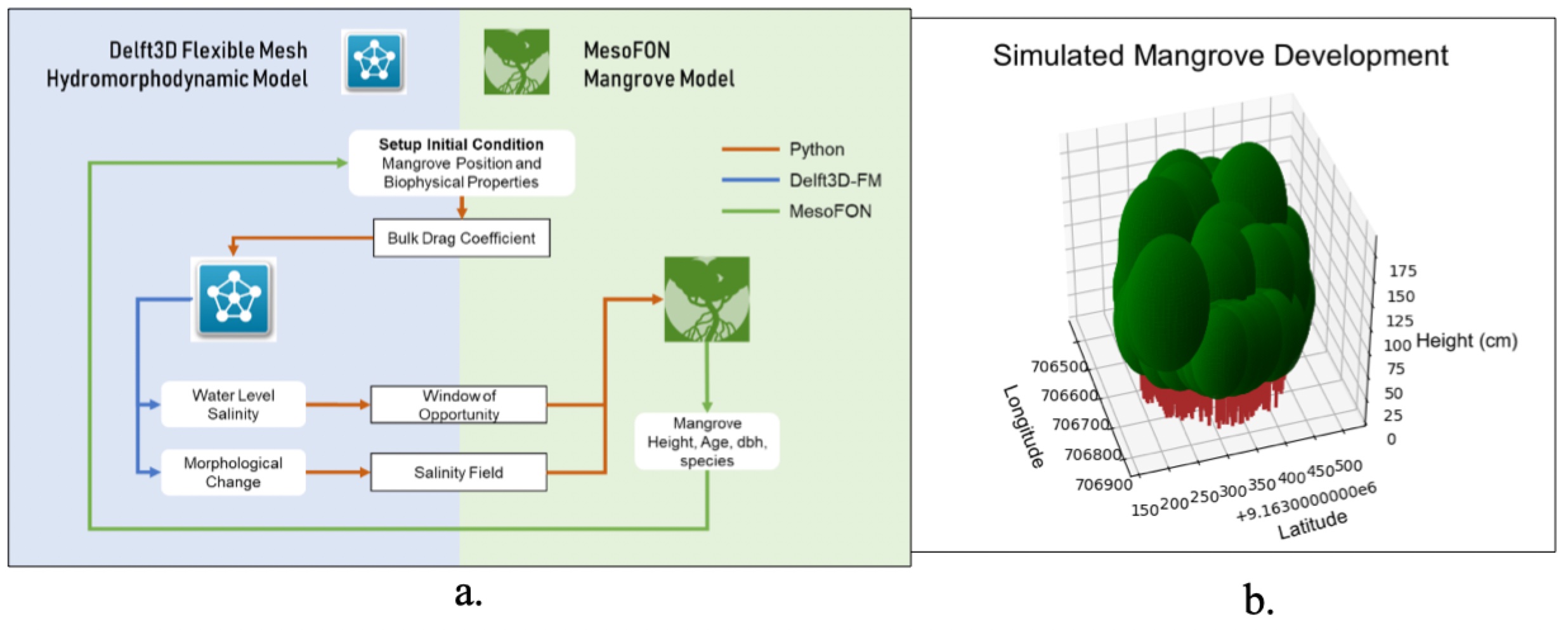S.M. Beselly1,2,5*, U. Grueters3, M. van Der Wegen1,4, J. Reyns1,4, D. Roelvink1,2,4, J. Dijkstra4
1 IHE Delft
2 TU Delft
3 Justus Liebig University Giessen
4 Deltares
5 Universitas Brawijaya
*corresponding author:
Introduction
Mangrove ecosystems have complex ecogeomorphic interactions between the hydrodynamic forcing (tides and waves, river runoff), sediment transport, morphological development, groundwater discharge, nutrient supply, and the mangrove dynamics itself. Several studies found that the species-specific survival of the mangroves depends on the competition in soil nutrient and light availability in space (resources), the stress in salt, pH, and hydrogen sulphide (regulators), and flooding patterns (hydroperiod). These factors are essential to the mechanistic understanding of mangrove dynamics. Few models have been developed that spatially explicitly simulate the life cycle of the mangroves to the environment, such as FORMAN (1998), KIWI (2000), MANGRO (1995), and MesoFON (2014). However, to our knowledge, studies including a morphodynamic feedback loop between the mangroves and their bed are lacking. In this research, we propose a coupling of the spatially explicit mangrove dynamics model (MesoFON, including the recruitment, establishment, growth, and starvation of individual trees) and the morphodynamic model Delft3D Flexible Mesh (Delft3D-FM).
Methods
The modelling is based on the three-monthly offline coupling of the hydromorphodynamic model Delft3D-FM with the mangrove model MesoFON. MesoFON is an Individual-Based mangrove forest dynamic Model (Java-based) that takes advantage of the fields-of-neighbourhood (FON), while the competition for above/below-ground resources is dealt with separately. The offspring production depends on the tree growth and rises with tree ontogeny. The coupling is designed as a series of information exchanges between a grid cell based hydrodynamic state and the environment, forcing the mangroves' growth and biophysical properties in a feedback loop.
Results
In the present work, we focus on the proof of concept of the coupling. We employed a schematized funnel-shaped estuary with a delta in the middle—to represent the Porong Delta, in Sidoarjo, Indonesia—with a single mangrove species population of different ages. The current model approach incorporates flooding patterns and salinity, as the environmental stressor, affecting the propagules production and tree competition. Model results show the schematized 11-year morphodynamic development as well as individual mangrove dynamics.

Figure 1: (a) Schematic of the coupling approach described the information exchange and key parameters, and (b) simulated individual mangrove development due to competitions and environmental forcing variations.
I. Surname1*, F.N. Another-Surname2 , Y. Next-Surname2
1 University Name, Country; 2 Organization Name, Country
* Corresponding author: mail.name@organization.org


